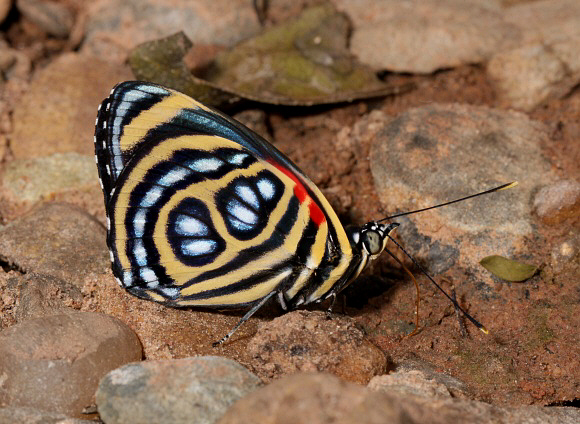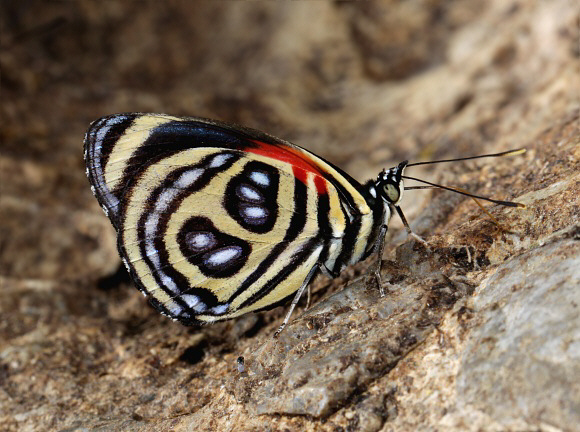 Callicore pygas cyllene, Satipo, Peru – Adrian Hoskins
Callicore pygas cyllene, Satipo, Peru – Adrian Hoskins
Introduction
There are about 20 species in the genus Callicore, all of which bear distinctive and graphic patterns on the underside hindwings, often resembling numbers or letters of the alphabet. The uppersides of all species are blackish, marked on the forewings with bright red or orange bands. The hindwings of several species also have red or orange markings but in most species they are plain black, with a very reflective brilliant blue sheen.
Unfortunately these beautiful butterflies are killed in vast numbers for their wings which are used by the souvenir trade for the production of decorated plates, jewellery, place mats and other trivia.
Callicore pygas is a widespread butterfly with 8 subspecies, with differ noticeably from each other with regard to the underside markings. In the type form of pygas the white band and the metallic blue scaling on the hindwings are both replaced by pale sandy yellow. Subspecies eucale is similar to the illustrated cyllene, except that the submarginal band is metallic blue instead of white. The butterfly tends to be very variable in colour, even at a single location.
The upperside of pygas is dark brown, with a large bright red patch occupying the basal half of the forewings. The hindwings are overlaid with a dull blue sheen, and additionally have a narrow broken pale blue submarginal band. As with other Callicore species, females are paler in colour than males, and have reduced blue scaling.
This species is found in Venezuela, Guyana, Ecuador, Peru, Bolivia, Paraguay, the upper Amazonian region of Brazil, and probably also in eastern Ecuador.
Habitats
Callicore pygas is found in tropical rainforest at altitudes between about 200-1000m.
Lifecycle
I have no information specific to pygas. In most Callicore species the eggs are white, and are laid singly on Serjania, Allophylus or other Sapindaceae.
Adult behaviour
Males visit sandbanks to imbibe dissolved minerals. They are usually only seen as singletons, often amidst small aggregations of other Callicore and Diaethria species.

Callicore pygas cyllene, Satipo, Peru – Adrian Hoskins
